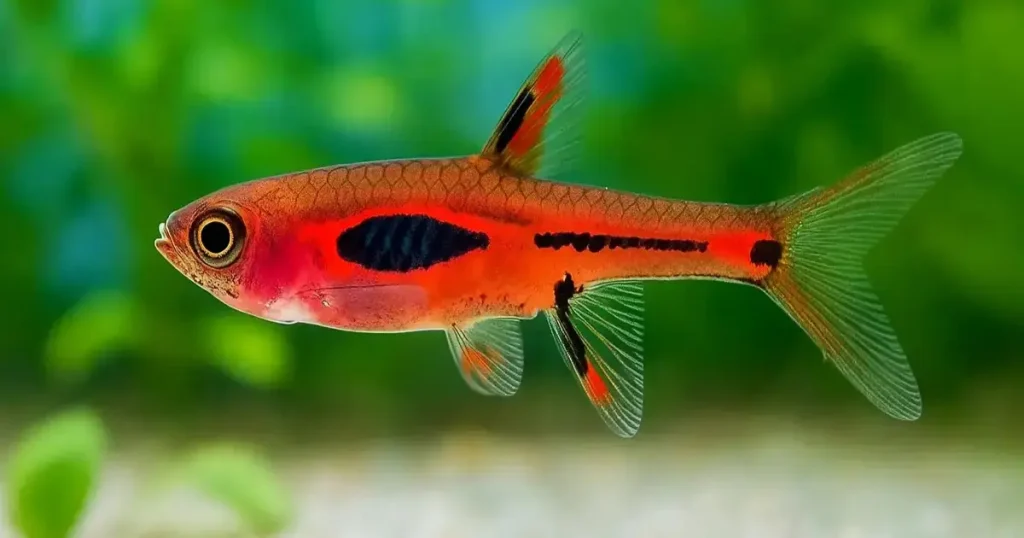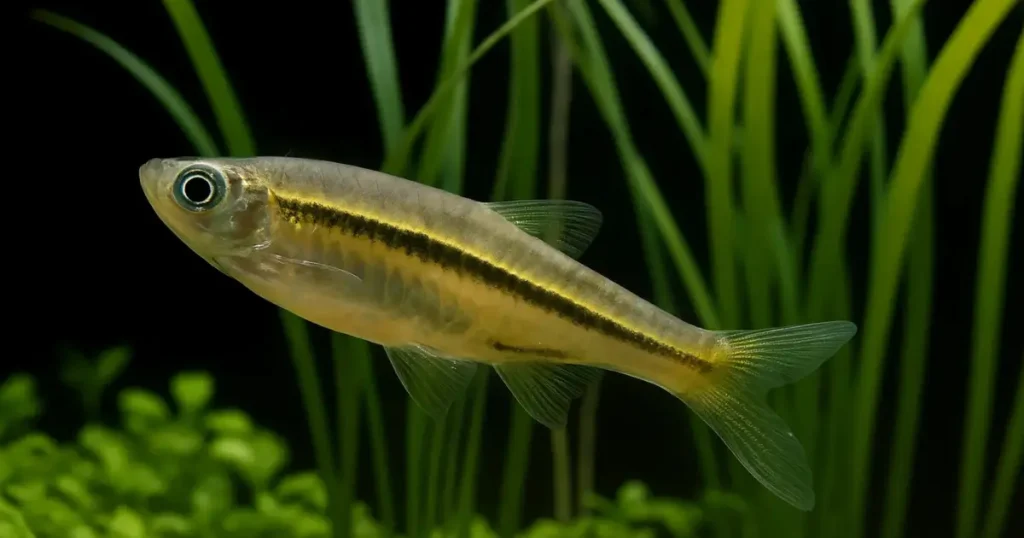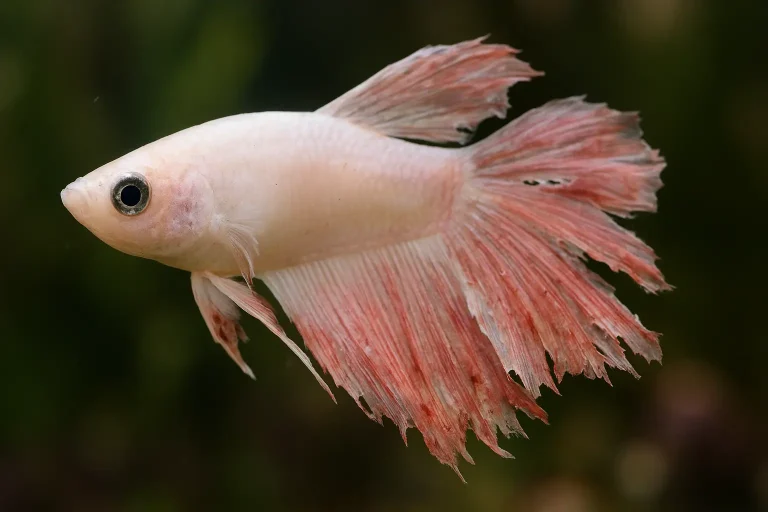Beginner-Friendly Guide to Rasboras
As we all know now, when life feels heavy, routines are unpredictable, and your brain is constantly overwhelmed, a fish tank can become a surprisingly healing presence. But not all fish are created equal. Some are high-maintenance divas that can make things worse. So if you want a colorful addition to your tank, without killing all your free time, beginner-friendly Rasboras are a wise choice.
These tiny, peaceful schooling fish bring gentle movement, vibrant color, and low-maintenance care to even the smallest aquariums. In fact, for anyone struggling with burnout, anxiety, or mental fatigue, Rasboras may be one of the most emotionally rewarding and easy fish to start with.
In this complete guide to Rasboras for beginners, we’ll show you exactly how to choose, care for, and enjoy these mindful little swimmers, without stress or second-guessing.
Are Rasboras Beginner-Friendly?
Rasboras are small freshwater fish native to Southeast Asia. They’re known for their peaceful nature and tight schooling behavior. Also they are adaptable to nano tanks while being compatible with plant and shrimp. They also have a low bioload so they don’t dirty the water much which is an added bonus. So, for overwhelmed adults who want a fish tank to calm them—not add pressure—Rasboras check all the boxes.
The best types for beginners include:
- Chili Rasboras (Boraras brigittae) – Tiny (¾ inch), deep red, thrive in 5-gallon tanks
- Harlequin Rasboras (Trigonostigma heteromorpha) – Slightly larger (1.5 inches), hardier, very social
- Lambchop Rasboras (Trigonostigma espei) – Sleeker than Harlequins, with a soft peach body and black wedge
If you’re feeling more confident or already have a stable, planted tank, you can also explore beautiful options like Neon Green Rasboras or Celestial Pearl Danios (often called Galaxy Rasboras). They’re a bit more delicate than Chilis or Harlequins, but incredibly rewarding once they settle in.

How to Choose Healthy Rasboras at the Store?
Picking healthy fish from the start is the key to a peaceful tank—and peace of mind.
What to Look For:
- Color: Healthy Chili Rasboras glow with ruby-red tones; Harlequins and Lambchops should have clean, defined black markings and warm orange bodies.
- Fins: Look for open, undamaged fins. Clamped or curled fins = stress.
- Behavior: Healthy Rasboras dart and drift in small groups, not isolate or hide in corners.
- Body & Eyes: Clear eyes, smooth scales, no white dots, bloating, or fuzz.
If you can, watch them for 5–10 minutes before choosing. You’ll quickly spot which fish are active and curious—and which ones are struggling. I’ve also added the male and female version images of the beginner-friendly rasboras to easily identify rhem.
❌ Avoid:
- Lethargic or “hiding” Rasboras
- Tanks with sick or dying fish
- Visible parasites or stringy poop
- Fish with pale color, shaking, or erratic swimming
Tank Setup Requirements
📏 Minimum Tank Size:
- Chili Rasboras: 5-gallon tank for 6–8 fish
- Harlequins & Lambchops: 10–15 gallons for a group of 6+
Rasboras must be kept in groups. A group of six or more creates a natural schooling dynamic, which reduces their stress and makes them more active and visible.
🛒 Recommended tank for Chilis:
Fluval SPEC 5-Gallon Aquarium Kit
Includes filter, light, and sleek modern design
Water Parameters & Conditions
Rasboras are adaptable, but they prefer soft, warm, slightly acidic water.
- Temperature: 74–80°F (23–27°C). You could install NICREW Mini Heater as it’s a compact and reliable option.
- pH: 6.0–7.5 (tap water is usually fine with conditioner)
- Water flow: Gentle, especially for Chilis—too much turbulence will exhaust them
Filtration, Plants, and Lighting
Filtration:
- Sponge filters are ideal: quiet, low-flow, and shrimp-safe. Aquaneat Sponge Filter could be an ideal choice.
Plants:
Rasboras love cover and hiding spots. Try some easy mantenance plants like Java moss, Anubias or Cryptocoryne. Floating plants like frogbit or red root floater would also work. Plants create a “forest” feel, reduce light intensity, and help maintain water quality.
Lighting:
Keep it soft and warm, as strong light could be stressful to your Rasboras. Use a low-to-medium LED with a timer (6–8 hours per day) like the NICREW LED Light with Timer.
Feeding Tips
What to Feed:
Rasboras have tiny mouths and prefer small, floating or sinking food. So their staple food should be Micro pellets or nano granules 🔗 Hikari Micro Pellets is one which you could try. Also, you could occasionally treat them with Frozen or live baby brine shrimp, Daphnia or Crushed flakes or spirulina.
Feeding Frequency:
- 1–2 times daily, in small amounts
- Only what they’ll eat in 2 minutes
Mistakes to Avoid:
- Feeding full-size pellets should be avoided as it has a choking risk.
- Leaving uneaten food in the tank
- Feeding once per week and overloading them. This could lead to slow buildup which leads to algae, ammonia.
Behavior and Temperament
Rasboras are among the most peaceful, community-friendly fish you can own. Their movement is fluid, gentle, and rhythmic—almost meditative. Remember that these are schooling fish so they are best kept in groups of 6-12. They are calm and confident when in groups and they’ll chase and flash around each other, especially before feeding. Watching them drift through plants and school together is emotionally grounding—many owners describe it as “mindfulness in motion.”
Best Care Tips to Reduce Stress
Have a simple routine to reduce stress for both you and your rasboras.
Low-Maintenance Routine:
- Weekly 25–30% water change with dechlorinated tap water 🔗 Seachem Prime
- Clean filter sponge monthly (in tank water, not tap)
- Wipe inside glass every 2–3 weeks
Tank Vibes:
- Dark substrate = better color and reduced glare
- Use black background paper to reduce reflections
- Avoid loud music or sudden light changes nearby
Vacations or Busy Days?
- Rasboras can fast 2–3 days
- For longer trips, you could install a NICREW Automatic Fish Feeder to make sure your Rasbora friends are fed on time.
- Use a smart plug or timer for lights to maintain rhythm
Compatible Tank Mates
Great Companions:
- Shrimp (Cherry, Amano)
- Snails (Nerite, Mystery)
- Endler’s Livebearers (males only)
- Pygmy Corydoras
- Sparkling Gourami (if mature, calm)
Avoid:
- Guppies, Danios as they are too fast
- Betta fish can be risky unless heavily planted and 10+ gallons
- Mollies, Platies, Barbs, or any fin-nippers

Common Mistakes & How to Avoid Them
Even though rasboras are considered beginner-friendly, some common missteps can still cause confusion, frustration, or even heartbreak. Here’s how to avoid the biggest pitfalls that new fishkeepers often encounter:
1. Keeping Too Few Rasboras
It’s a common mistake to buy just one or two rasboras—especially if you’re working with a small tank. But these fish are true schooling species, meaning they depend on their group to feel safe. When kept alone or in pairs, rasboras can become anxious, hide constantly, lose their color, or stop eating altogether. In some cases, chronic stress from isolation can even shorten their lifespan.
The fix:
Always start with at least six rasboras of the same species. In a proper group, they’ll exhibit natural schooling behavior, explore the tank confidently, and become more active and visible. More fish equals more harmony.
2. Overfeeding
It’s easy to overfeed when your rasboras act hungry—or when you’re worried they’re not eating enough. But these fish have tiny stomachs (about the size of their eye) and can’t process large meals. Excess food sinks, rots, and releases toxins like ammonia into the water, which can poison your fish silently over time.
The fix:
Feed just a pinch once or twice a day—only what they can eat in 2–3 minutes. Use high-quality micro pellets or crushed flakes suited for small fish. If you’re unsure, it’s safer to slightly underfeed than overfeed.
3. Skipping Water Changes
With a small tank, it’s tempting to put off cleaning—especially if the water looks fine. But toxins like ammonia, nitrite, and excess nitrate don’t show up in clear water. Over time, these invisible pollutants wear down your fish’s immune system, dull their color, and make them vulnerable to disease.
The fix:
Build a low-effort habit of doing 25–30% water changes once a week using dechlorinated water. Think of it like refreshing the air in a room—you’re giving your fish new oxygen and taking away the invisible waste they’ve been living in. A simple siphon, a bucket, and 10 minutes is all it takes to protect your tank’s harmony.
4. Adding Fish to an Uncycled Tank
Many beginners unknowingly add fish to a brand-new tank before it’s safe. This creates a dangerous situation known as “new tank syndrome,” where toxic ammonia builds up before beneficial bacteria can process it. Even hardy fish like rasboras can suffer gill burns, stress, and early death in an uncycled aquarium.
The fix:
Make sure your tank is fully cycled before adding rasboras. This means your filter has established colonies of good bacteria that can break down fish waste safely. You can speed this up using bottled bacteria or adding used filter media from an established tank.
Use test strips or a liquid test kit to monitor your water regularly in the first few weeks. You’re looking for:
- Ammonia: 0 ppm
- Nitrite: 0 ppm
- Nitrate: under 20–30 ppm
🧪 Helpful tool: Tetra 6-in-1 Test Strips

💬 Final Thoughts
For people who need peace, routine, and something beautiful to come home to, beginner-friendly Rasboras are one of the most underrated and emotionally rewarding fish you can choose.
They’re gentle, colorful, social, and thrive in planted nano tanks—bringing you a small world of movement and calm. When the rest of life feels noisy or chaotic, watching a school of Rasboras glide through green leaves is like therapy in a tank.
You don’t need to be a fish expert. You just need a little guidance, a planted tank, and a willingness to start slow.
📝 This post contains affiliate links. If you click and purchase, I may earn a small commission at no extra cost to you. Every product listed is chosen with love to support your stress-free fishkeeping journey. 💙



Leave a Reply